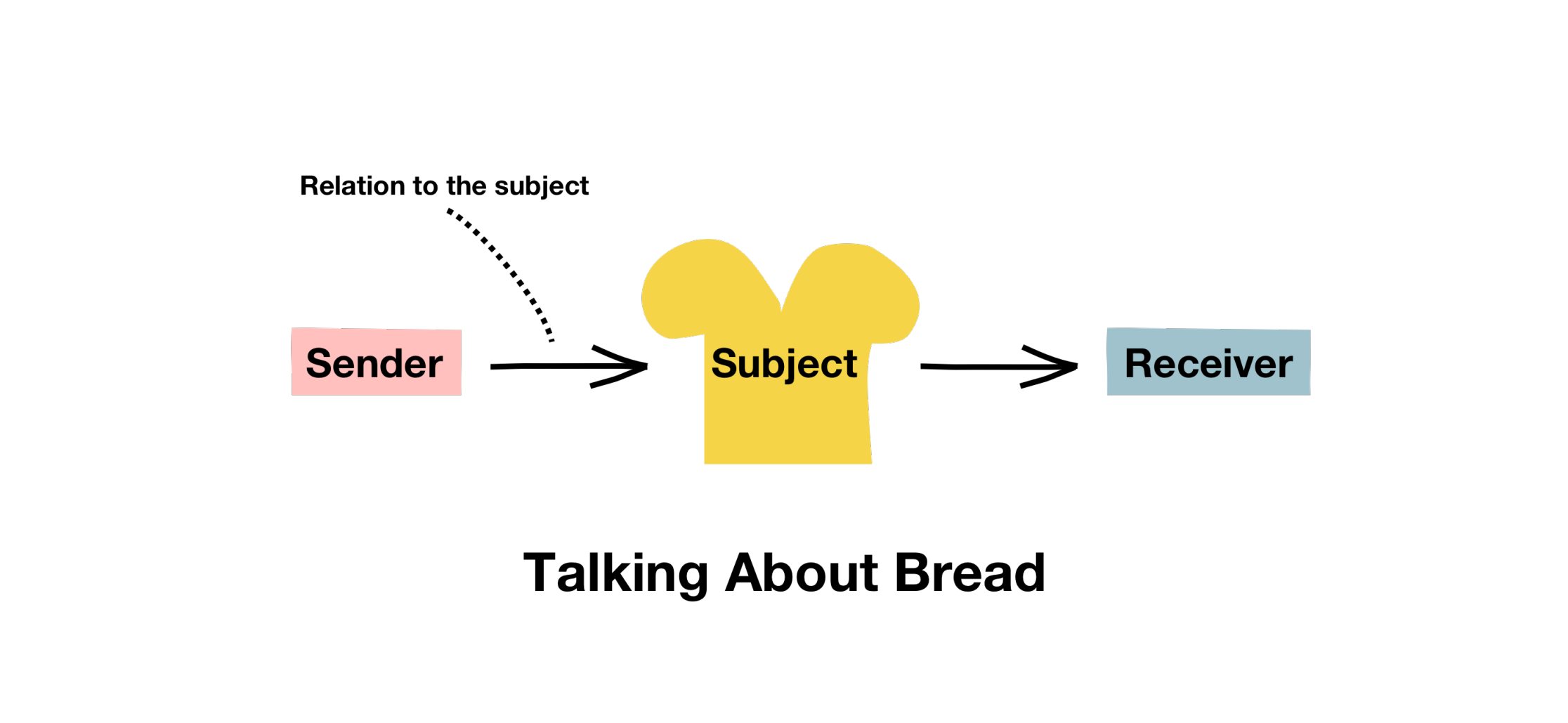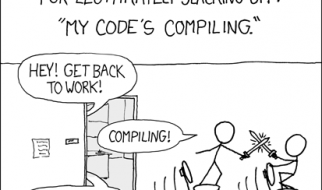
Today, I think the ability to ask good questions is hugely underrated. Asking good questions is essential to help others, to learn from them, understand a problem to come up with the right solution, or to understand why someone is behaving the way they do.
Since I started working as a Process Designer & Facilitator I have had, and listened to, tons of conversations, ranging from ones between team members and interviews with new clients, to day-to-day conversations with my mom.
But during these deeper conversations, I?ve experienced and heard the difference between the answers of an average question and a well-defined question asked at the right moment. This made me ask myself:
?What is a good question??
After reading some books, and having some conversations with others, I combined all the theory and my experience into nine principles to ask better questions. Now whenever I?m having a conversation, I keep these in mind ? and I would like to share them with you as well. Don?t expect a Buzzfeed-ish list of Ten Life-Changing Questions That You Should Always Ask, or some sort. Some might be new to you, some might not. Just nine general principles to ask better questions and have a better conversation with your colleagues, a new client, or your mom. Have fun!
1. Know what you want to know and choose carefully
Quite obvious, but insanely important nonetheless; why are you asking questions? Are you meeting someone for the first time, are you understanding the needs of your client or customer, or are you helping someone? Depending on this, your questions differ enormously.
When you know that, carefully decide your path to get there. When I?m having a conversation, I compare the responses I get with different doors of a room; each response or subject is a different door. Asking the right question for me is about opening the right door to see what?s behind.

Recently, I wanted to get to know someone on a personal level. Therefore I asked ?What in life gives you energy??, and my respondent answered ?surfing, traveling, and hanging out with friends?. As you can see, I now have three doors that I can open to see what information is behind.
As said, I wanted to get to know that person. Therefore I decided to open door number three, because traveling can be a life-changing experience, and therefore a perfect way to get to know someone personally.
2. Ask open questions ? but not always
A friend of mine got back from a long trip to France recently. When asking her how it was, I heard myself asking: ?Was France nice?? By being a closed question ? with some moral value ? she was biased to answer anything outside of it being nice or not. If I would have asked ?How was your holiday??, maybe my friend would have answered differently and more genuine, since she could decide herself what she wanted to talk about.
Ask open questions. While you can only answer closed questions with a yes or no, with an open one, you can answer as you?d like.
But there are some exceptions when a closed question is stronger than an open one. For example, when you would like someone to state something more clearly, or with more confidence, or if you would like to understand better what?s on their mind. Then you could repeat the question you asked, or the answer that?s given, by rephrasing it in a closed way. After hearing ?France was nice?, I would ask ?Was it?? Which gives more opportunity to my friend to share how it was. Play with this, and see for yourself!
3. Be mindful of how much you are steering
How much are you steering the conversation by influencing what is said in which form? In his book Humble Inquiry ? The Gentle Art Of Asking Instead Of Telling, Emeritus MIT Professor Edgar Schein defines four ways of asking questions, or inquire as he puts it.
First there is Humble Inquiry where you maximize curiosity while minimizing bias and preconceptions about the other. You?re no threat to?, and you?re not influencing the content of what the person says, or the form in which it is said. You could see Schein?s Humble Inquiry as all my nine principles together.
The second way is Diagnostic Inquiry. Here you are steering the conversation and influencing the other person (sub)consciously by asking about:
- Feelings and reactions: making it personal by asking about an emotional response to something that happened: ?How did you feel about that??
- Causes and motives for something happening: ?Why did that happen??
- Actions: what they did, are doing, and are thinking of doing in the future: ?What have you tried so far??
- Systems: to understand the complete situation: ?How do you think it affected her, when you did that??
Then there is Confrontational Inquiry: Here, you basically insert your own ideas in the form of a question. It might be coming from curiosity or interest, but it?s connected to your own interests. Confrontational Inquiry is asking ?How do you feel?? instead of ?Are you angry??
Schein?s fourth way is called Process-Oriented Inquiry. By doing this, you shift the focus of the conversation onto the conversation itself. Here you are shaking up the conversation completely, allowing both of you to reset, to restate, and recalibrate your expectations: ?What is happening here? Have we gone too far??
So next time you?re having a conversation, are you letting the conversation flow, or steering it?

4. Go with the flow
One time I was interviewing an older woman because I was researching elderly and loneliness. Out of nowhere, she started sharing what her favorite tea was ? for fifteen minutes straight. Not something that I was looking for at that moment.
Sometimes people get off-topic. Do you recognize this? Many times I realize that happens because my question was unclear. If you find yourself in a similar situation: relax, and don?t steer too much. There will probably be an opportunity soon for you to bridge the conversation towards the subject you want to talk about. Or you could ask the question again in a bit.
And if it?s really necessary you can always gently and genuinely say: ?That?s not what I?d like to talk about, and considering the limited time we have, can we talk about ???
And in the meantime, there might be valuable information in the respondent?s answer, because why are they talking about it? This was the case with the tea lady. Drinking tea with others was hugely important for her, so maybe we could tackle loneliness by doing something with that.
5. Less is more
Recently, after a woman gave a very inspiring talk about her project, someone in the audience asked: ?Why did you start doing this, what inspired you, and what do you hope to achieve??
The respondent got a bit confused, and only answered why she started doing this ? which made the person who asked the question a bit unsatisfied with the answer.
Understandable, because if you look at the question, it?s actually three questions in one.
If you want your question to be of the most value, keep it simple. Stick to one question at a time and only rephrase if the respondent does not understand it. And if you?re unhappy with the answer, ask again!
6. Listen actively
When listening to the answers, really listen to what the other person is saying. Talk as little as you can. Even better: don?t talk! This will give the respondent the feeling that you are genuinely interested, and listening!
Don?t think about what you are going to ask next
Also, don?t think about what you are going to ask next, while the respondent is still talking. It?s difficult to learn to do this, but trust me, that next questions will arise by itself once you?re really listening to what a person is saying.
Moreover, look the respondent in the eye (don?t be too intrusive, though), and try to not do something else while listening. This way, you?ll be able to see a lot of non-verbal communication, which might give you signs of what?s really going on. Remember the three doors above ? each with a different subject? By being aware of non-verbal communication, maybe there are even more doors of things that you observe, which you are not discussing.
And if you?re reacting to what the responder is saying, try not to morally judge the responses, cause that might make the other person less comfortable.
And after asking a question, don?t hijack the conversation by sharing something personal the moment the other person shares something. You ask someone a question to listen to them, not to share something yourself right away!
7. Create safety
Don?t let fear and insecurity replace curiosity in your conversation. To get to a deeper conversation, you need to make the respondent to feel that they can share and do what they want, without fearing their answers are not good enough, or too weird. Therefore you need to create a psychological safe space. Read my article Why Psychological Safety is Essential for your Team?s Success to learn how to do that.
8. Have a deeper conversation ? or not
If we?re having a conversation, it can be more surface-leveled, about last night?s football game, our weekend plans, or the classic subject: the weather. But we can also choose to have a deeper conversation.
Know your level of depth of the conversation, and if you want your questions to take you to a deeper level, or more to the surface. Not every conversation lends itself to go into depth. If you do, it?s usually best to start on the surface level and go deeper with time. And if you are talking about a heavy subject, think about how you wrap-up the conversation as well. It might not be the best thing to end on a very deep subject, and needing to leave.

Changing the subject during a conversation usually takes the conversation more towards the surface. So how do you get towards a more deeper and personal conversation?
There?s two ways we can talk about a subject. We can refer to the subject, or we can talk about our relation to it.
Let me explain this with a simple example: we?re having a conversation about eating bread. If you ask me about the bread, can tell you that it?s usually brown, sometimes white, and that it tastes a bit sweet and sometimes sour. Or you can ask me how I eat it.
If you want to know my relation to bread, you can ask what I think of it, or how it impacts me: I really like the taste of it, but I?m a bit intolerant to it, so I can?t eat too much of it.

My point is, if you want to go deeper, ask questions about how the other person relates to the subject. Most of the time, that?s where the magic happens. So next time you?re having a conversation:
- Ask about the person?s relation with the subject
- Ask why (Toyota?s famous five whys)
- Share something personal to gain trust, so that the other person can share more
9. Ask naive questions
Don?t be afraid to look stupid, and ask that naive question! The answer that you get differs a lot of times from the answer that you thought you?d get. And once you know what?s really going on, you?ll be a lot smarter than the people acting on wrong information. It?s also nicer to show the other person that you really wanted to understand what he or she is talking about, instead of playing along. Ask the obvious question as it can be the most important one.
Which principles do you find important? Because, this list of principles is definitely not set in stone, but it serves as a starting point for you to start asking better questions. Doing this will lead to more open communication and a more open culture. If you need help creating a culture that works for you, your team, or your organisation, let me know!
Next time you are having a conversation ? if that?s one with your colleagues, new clients or with your mom ? think about these nine principles, play with them, and see for yourself what happens.


